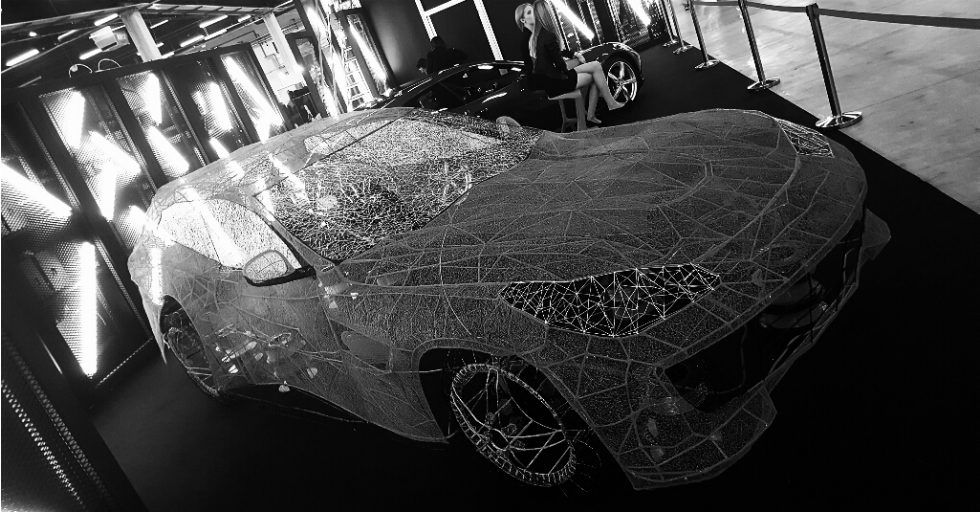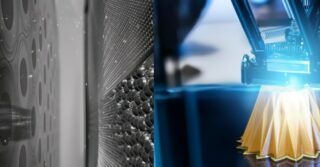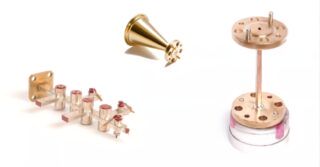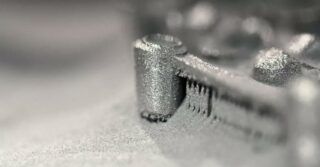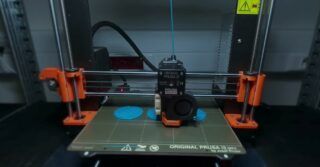In 2018, the global market related to 3D printing will reach $ 16.2 billion. The average annual growth of the industry is estimated at 45%. At the same time, Boeing begins the production of its aircraft components in 3D printing technology. Therefore, it is not surprising that also in Poland this branch of the economy is developing very dynamically.
From the cup to the car
The pace of the development of the industry in our country is evidenced by the fact that three-day 3D Printing Days took place during the Tenth Metal Processing, Machine Tools and Tools STOM-TOOL Fair in Kielce, held for the tenth time at the end of March. In earlier editions of the event, they were one of the accompanying events. At this year’s Fair, they have become one of their most important – and certainly the most interesting in the media – elements of the event.
During the 3D Printing Days, 80 industry exhibitors presented themselves, presenting both printer manufacturers and service companies, as well as the academic community, actively operating in the field of technological innovation, directly related to 3D printing. As a result, it was possible to see the full range of possibilities offered by this manufacturing technology, which is rapidly entering the industry.
Therefore, visitors to the Fair could see, among others printed motorcycles, medical prostheses, everyday items. For example, at the Wolff stand, you could see, among others a designer table weighing 260 kg – the world’s largest composite print, as well as a life-size model of an openwork, red Ferrari Lusso. It was printed using handheld 3D printers by a group of students from the Warsaw University of Technology. Above all, however, during the Kielce exhibition event, it was possible to see how 3D printing technology enters the industry as a wide bench, and in the long run also into everyday life.
3D in mass production
– At the moment, we see a great industrial potential of this technology. We produce machines that work on the line, in the production cycle. We see the potential for 3D printing machines to become production machines as well. We observe how this market is changing and how it grows. This is a huge leap in terms of 3D machines in Europe. What is interesting is that we are already dealing with high-performance machines that can already be mass-produced – says MSc. Rafał Lisowski, Product Manager Laser TRUMPF Polska. And he adds: – Of course, when it comes to the advantages and additive technologies, it is known that when we produce smaller quantities of pieces, complex details, we will have a greater advantage in 3D printing.
So far, 3D printing has been used in industry primarily in the context of prototype and low-volume production. Currently, the first technological lines are being implemented, the task of which is mass production based on it. An example of this is the footwear giant that is Adidas. According to the Association of the Polish 3D Printing Industry: “What is most revolutionary in the cooperation between Adidas and Carbon3D is the use of 3D printing technology for the mass production of finished products offered to Adidas customers. So far, no company has adapted 3D printing technology in such a way as to obtain a product ready for use by customers (shoe soles) without additional processes. In addition, it did not create the possibility of mass production of these products in order to serve hundreds of thousands of recipients. ”
In this way, Hubert Gleba, Account Manager Materialize S.A., spoke about the possibilities offered by 3D technology during the 3D Printing Days:
3D production can successfully replace most traditional techniques related to the production sphere, such as machining. The SLS laser sintering production technology turns out to be irreplaceable, even in serial production. Thanks to it, we can create practically anything we imagine.
The use of 3D technology allows for the production of a given part from a smaller number of elements, it is much simpler than the use of, for example, injection molds in production, it allows you to optimize production processes and shorten the time to market for a given project.
More and more uses
The fact that the use of 3D printing will continue to increase is evidenced by both the already existing solutions in this area, but also various types of research and development, thanks to which the number of its applications will continue to increase. A good example of this is the research conducted by scientists from the Warsaw University of Technology. – Welding and 3D printing are two different areas at first glance. But welding is not limited to joining elements or generating parts. We found a slightly different use for it – says Mateusz Ostrysz, chairman of the JOINT Welding Circle, operating at Zakład Inżynierii Sporu WUT. – It would seem that 3D printing concerns only laser-assisted methods or plastic production. We produce metal models by arc welding. Laser methods come at a high manufacturing cost. Meanwhile, arc surfacing methods are developing in such a way that they offer us thin-walled models, unlimited shapes and high mechanical properties that characterize the final 3D welding result.
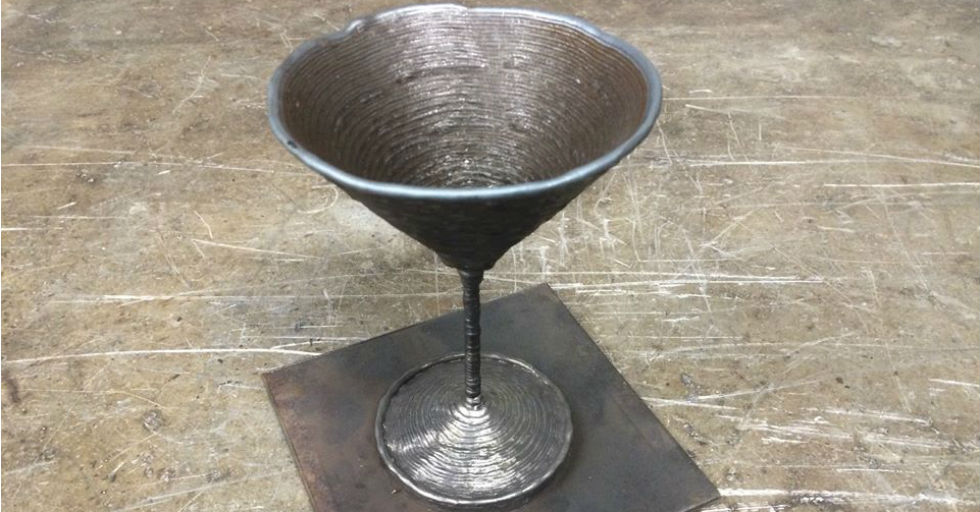
Fot. Politechnika Warszawska
At the same time, looking at the development of technology, 3D printing is increasingly used in medicine. According to Zortrax: “Specialists from the Department of Medical Physics of the West Pomeranian Cancer Center in Szczecin have developed a method of using 3D printing in the process of planning and treating patients with neoplastic changes on the skin or shallow under its surface. In treatment with the use of radiotherapy, the so-called boluses. These are materials prepared individually for each patient and placed directly on the skin during a therapeutic session. ”
So far, boluses have been prepared from paraffin patches placed directly on the patient’s skin or a mold. Thanks to the use of new technology, this process will be significantly improved. – By using a 3D printer, we can precisely reproduce the designed bolus shape, which increases the accuracy of the therapeutic dose delivery to the cancerous area, in accordance with the prepared treatment plan, and thus increases the quality of the treatment. – says medical physicist Magdalena Łukowiak.
When is the first plane?
What is the effect of combining traditional manufacturing methods and specialized 3D technology? This is clearly visible in the case of aviation, and above all Boeing, which has recently started printing engine components on 3D printers. As Forbes informs: “The first test flight of the newest Boeing machine took place at the end of January. The Boeing 737 MAX is equipped with a pair of LEAP-1B engines. Each of them consumes and emits 15 percent. less fuel and CO2 than the best CFM engines to date, it is much quieter (40%) and requires less maintenance. These parameters were achieved thanks to the use of innovative production methods. The engine consists of 19 3D printed metal fuel nozzles, engine covers made of ultra-light and temperature-resistant Ceramic Matrix Composites (CMC) materials and compressor blades made of single crystals. ”
In this case, it is worth pointing to the fact that the production of fuel nozzles from a nickel-cobalt alloy, 25% lighter than before, was possible only thanks to the use of 3D printing. This is because the nozzle, which previously consisted of 18 elements, is now one integral whole. Therefore, we can be sure that further solutions in this area will revolutionize production not only in the aviation industry. – Boeing has so far made over 200 different parts for 10 types of aircraft using additive technology. Overall, in the aerospace industry, both military and commercial aircraft, more and more parts are made using additive manufacturing. Drones in this technology are already being made. Also prototype models of a jet engine. What awaits us in the future? Probably printed passenger planes – states Dr. Eng. Włodzimierz Adamski, President of the Board of the Polish Association for the Dissemination of Computer Engineering Systems ProCAx.


